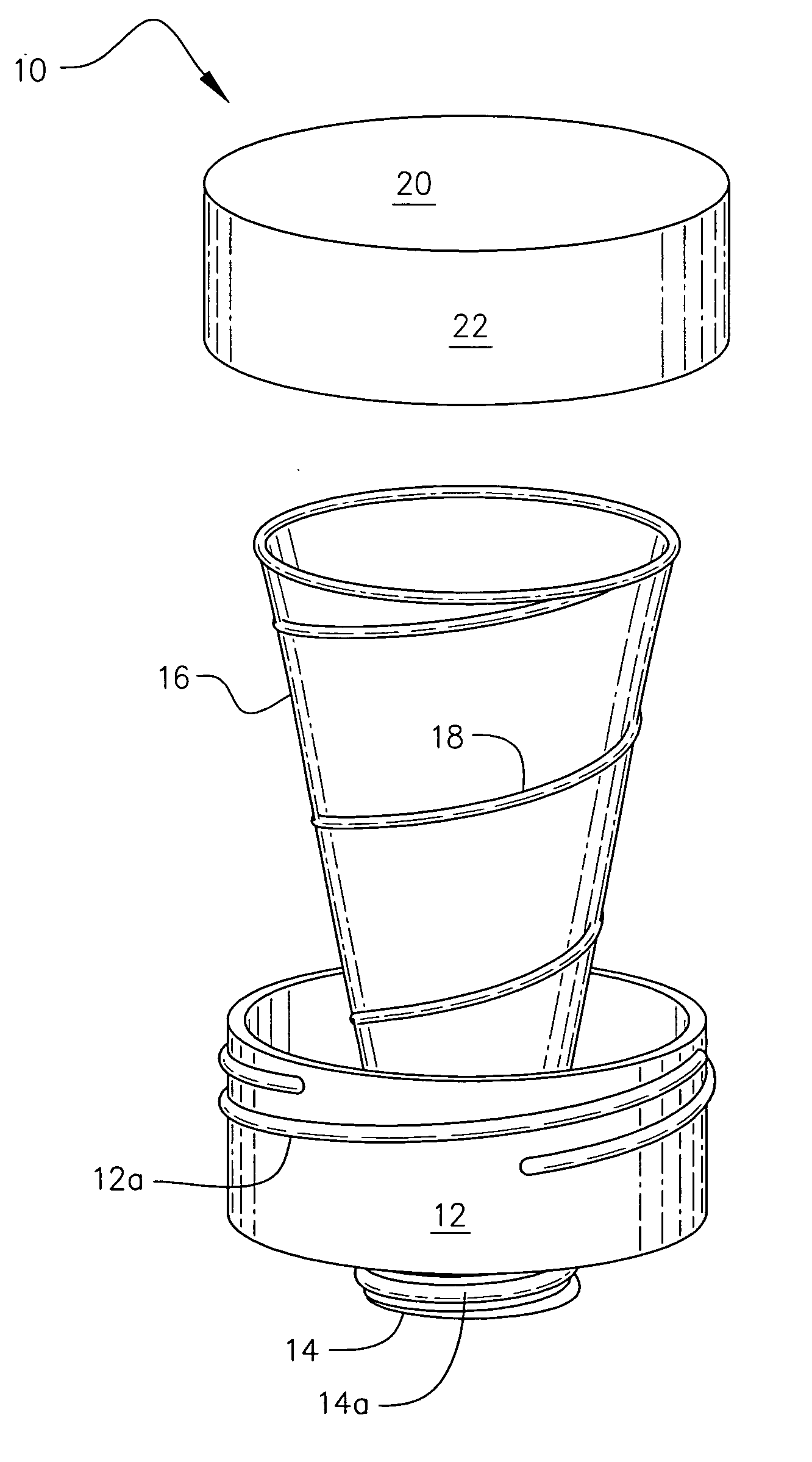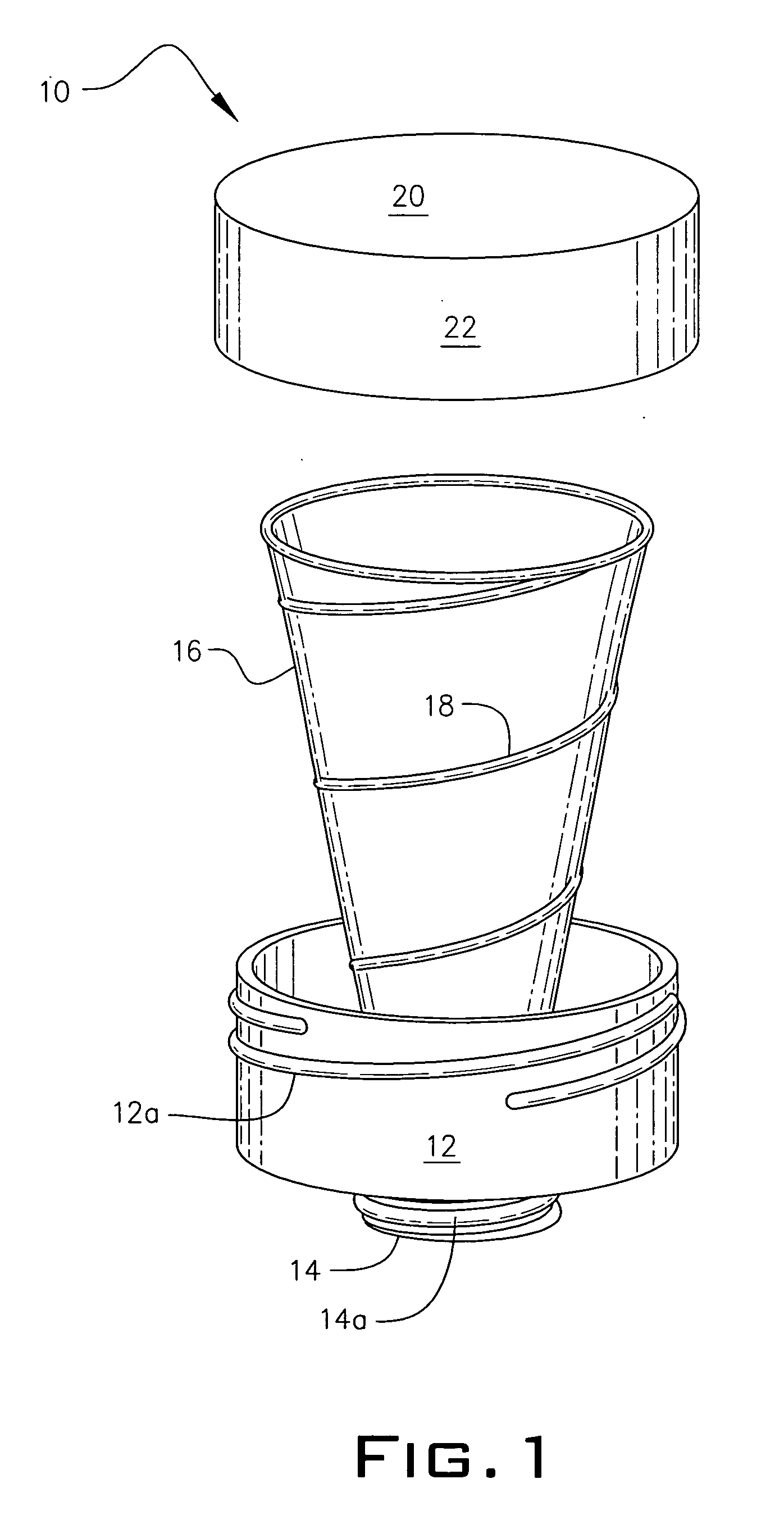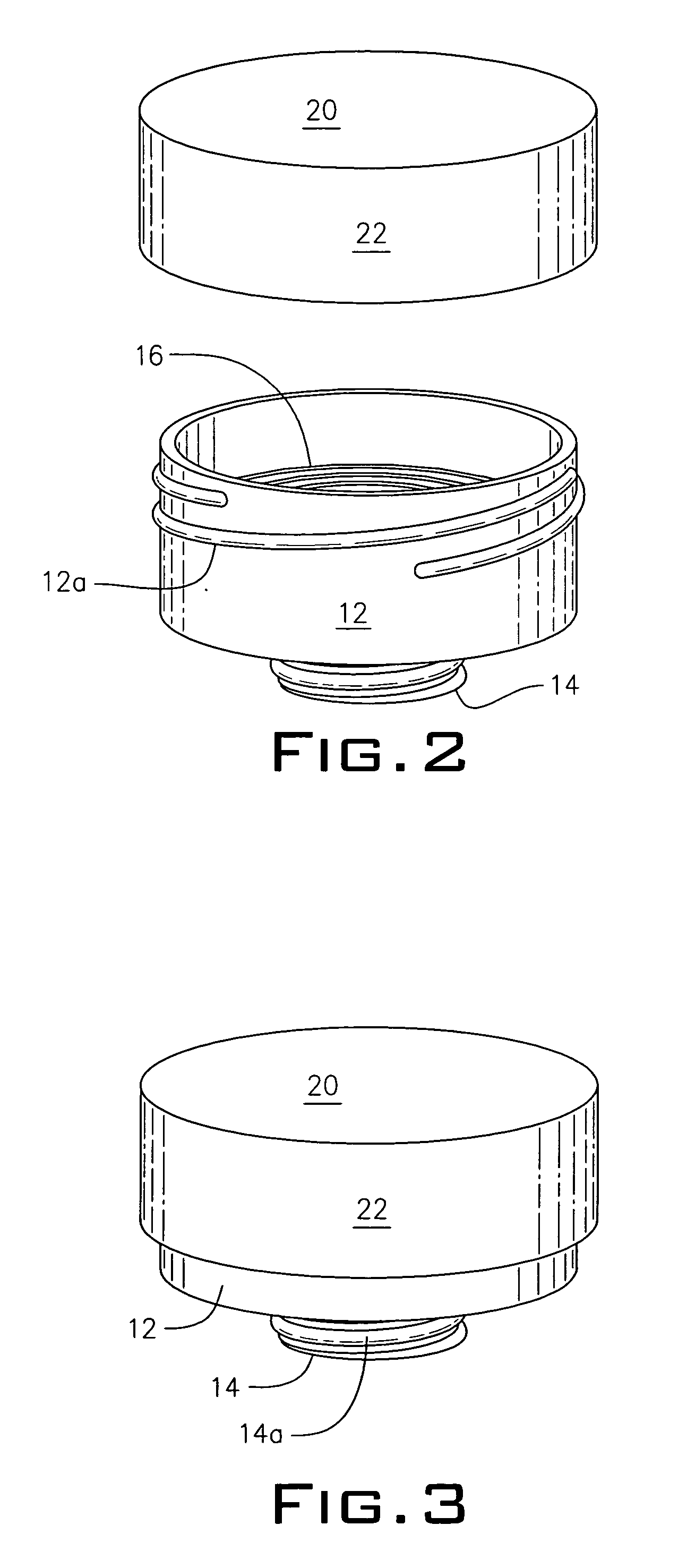Self-deploying funnel
a funnel and self-deploying technology, applied in the field of funnels, can solve the problems of dirty clothes, dirt, grime or other debris in the crankcase, and the messy task of filling the crankcase of an internal combustion engine with oil as part of the oil change procedur
- Summary
- Abstract
- Description
- Claims
- Application Information
AI Technical Summary
Benefits of technology
Problems solved by technology
Method used
Image
Examples
first embodiment
[0047]In FIGS. 1–3, external helical threads 12a are formed about the circumference of base 12 and mating internal threads, not depicted, are formed in an interior surface of sidewall 22. This enables cap 20 to screw-threadedly engage base 12 in the manner depicted in FIG. 3. When in its FIG. 3 configuration, funnel 16 is in a collapsed, or telescoped configuration. Accordingly, when so contracted it occupies much less space than when in its fully deployed configuration as depicted in FIG. 1.
[0048]Significantly, when cap 20 is unscrewed from base 12, the user need not grasp funnel 16 to cause its deployment. Instead, helical and conical spring 18 is loaded when cap 20 is secured to base 12 and said spring 18 unloads when said cap is removed, thereby deploying funnel 16. Therefore it is said that funnel 16 is a self-deploying or self-extracting funnel. The user firmly grasps cap 20 and sidewall 22 as said cap is unscrewed so that said user may allow deployment of funnel 16 at a reaso...
second embodiment
[0057]The first alternative method for such releasable securement is depicted in FIGS. 4–6. Known as a bayonet mount, this locking means includes a couple of “L”-shaped slots, collectively denoted 24, formed in base 12 in circumferentially spaced apart relation to one another. Each slot 24 includes a vertical section 24a, a circumferentially-extending section 24b, and a vertical, truncate section 24c. A protuberance, not shown, is formed on the interior wall of sidewall 22 of cap 20 and is sized to slidingly engage all three sections of “L”-shaped slot 24.
[0058]More particularly, cap 20 is used to compress funnel 16 as in the first embodiment, and the undepicted protuberance is inserted into section 24a until it bottoms out. Cap 20 is then rotated about its axis of rotation so that the undepicted protuberance enters into slot section 24b and reaches the end thereof. Cap 20 is then released and the inherent bias of funnel 16 drives the undepicted protuberance to the top end of slot s...
third embodiment
[0061]a means for releasably securing cap 20 to base 12 is depicted in FIGS. 7–9. A pair of catches, collectively denoted 26, is formed on an exterior sidewall of base 12 in diametrically opposed relation to one another. They may also be circumferentially spaced apart from one another in a relationship other than such diametric opposition. Only one of said catches 26 is fully visible in said Figs.
[0062]A pair of latches, denoted 28, that respectively mate with said catches 26, is formed on an exterior side wall of cap 20 in diametrically opposed relation to one another and in mating relation to the catches. Only one of said catches is visible in these views. Each latch 26 is apertured as at 30 to receive its associated catch 28. Each latch 26 is also slightly pivotable about a transverse axis mid-length of each latch so that each latch can be disengaged from its associated catch by a squeezing action applied simultaneously to the opposed latches as indicated by converging arrows 32a...
PUM
| Property | Measurement | Unit |
|---|---|---|
| diameter | aaaaa | aaaaa |
| mid-length | aaaaa | aaaaa |
| size | aaaaa | aaaaa |
Abstract
Description
Claims
Application Information
 Login to View More
Login to View More - R&D
- Intellectual Property
- Life Sciences
- Materials
- Tech Scout
- Unparalleled Data Quality
- Higher Quality Content
- 60% Fewer Hallucinations
Browse by: Latest US Patents, China's latest patents, Technical Efficacy Thesaurus, Application Domain, Technology Topic, Popular Technical Reports.
© 2025 PatSnap. All rights reserved.Legal|Privacy policy|Modern Slavery Act Transparency Statement|Sitemap|About US| Contact US: help@patsnap.com



